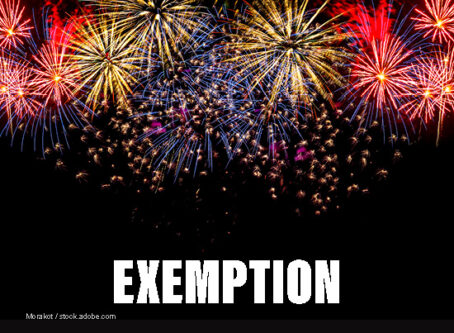States enact rules that cover motorcycle lane filtering
Operating a motorcycle between traffic lanes is a maneuver many professional drivers and others have witnessed through the years. The practice is commonly referred to as lane splitting or lane filtering.
Legalization of the maneuver in certain circumstances has turned into an annual topic at statehouses around the country.
Advocates argue the maneuver is beneficial because it saves motorcyclists time and fuel, in addition to reducing their risk of getting rear-ended in stop-and-go traffic.
But some in the trucking industry have raised concerns about motorcyclists attempting the maneuver around large vehicles.
Background on state activity
Almost a decade ago, California became the first state to adopt a rule to permit so-called lane splitting with motorcycles.
The 2016 rule authorizes motorcyclists to travel between lanes at speeds up to 10 mph, provided that traffic is moving at 30 mph or less.
Utah followed suit three years later. The Beehive State law permits motorcyclists to move between stopped vehicles on roads with a posted speed limit of 45 mph or less.
Motorcyclists are permitted to travel 15 mph or less on roadways with two adjacent lanes to split travel lanes when traffic is stopped.
The lane-filtering rule includes permission for motorcyclists to move to the front of a traffic light. Motorcycles can move to the front only when vehicles being overtaken are stopped.
In 2021, Montana was added to the list of states to legalize lane filtering. The maneuver is permitted when “on a road with lanes wide enough to pass safely.”
Two-wheeled motorcycles are permitted to overtake stopped or slow-moving traffic at a speed up to 20 mph. Filtering between lanes of stopped traffic traveling in the same direction is permitted as conditions allow.
Arizona enacted a law to permit lane filtering the following year. As a result, motorcyclists in the state traveling on congested highways are allowed to move between vehicles up to an intersection.
The law permits lane filtering to be completed on roadways with two lanes of traffic in the same direction with a speed limit up to 45 mph. Vehicles must be at a complete stop.
Additionally, motorcycles can travel up to only 15 mph to complete the maneuver.
On the other end of the issue, about a dozen states prohibit lane filtering.
According to an Oregon Legislature analysis, the list includes Arkansas, Delaware, Kentucky, Mississippi, Missouri, New Mexico, North Carolina, Ohio, Oklahoma, Texas and West Virginia.
The matter continues to be a topic of discussion at statehouses.
Colorado
In Colorado, Gov. Jared Polis has signed into law a bill to legalize lane filtering.
Previously SB79, the new law authorizes a motorcycle to pass another vehicle in the same lane if traffic is stopped and the motorcycle is moving at 15 mph or less.
The maneuver is forbidden on the right shoulder or in a lane of traffic moving in the opposite direction.
A clarification is included that the move is forbidden once vehicles being overtaken or passed begin moving.
The new law takes effect Aug. 7. It includes a September 2027 sunset date.
The Colorado Department of Transportation will collect safety data over the next three years to determine whether the rules are worth continuing. If so, state lawmakers would be responsible for approving a new law.
Utah
In 2019, Utah passed a law permitting lane filtering.
In March of this year, Gov. Spencer Cox signed into law a bill that clarifies what is permissible when performing the maneuver.
Rep. Stephanie Gricius, R-Salt Lake City, has said the rule revision was requested by motorcyclists to clear up where the maneuver is permissible.
The new law, HB311, states that lane filtering is permitted on roadways divided into two or more adjacent traffic lanes in the same direction of travel. Additionally, the maneuver is authorized on freeway off-ramps.
Lane filtering is prohibited on an on-ramp.
The clarification to state law took effect May 1.
Elsewhere, pursuits on the topic have died or are running out of time for passage.
Missouri
Time is running out on a Missouri House bill to put into statute that lane filtering is allowed under certain circumstances. The rule would prohibit lane splitting.
HB2032 defines lane filtering as driving a motorcycle between rows of stopped or slow-moving vehicles traveling in the same direction on divided or undivided roadways.
Lane splitting is defined as driving a motorcycle between rows of fast-moving vehicles traveling in the same direction on divided or undivided roadways.
Lane filtering would be permitted when the motorcycle is traveling up to 10 mph over the speed of traffic and not more than 25 mph.
Any vehicle operator who intentionally impedes or attempts to prevent a motorcyclist from performing the maneuver could be ticketed.
The bill has not been sent to a committee.
Oklahoma
One Oklahoma bill to legalize lane filtering has died.
HB3582 called for authorizing the maneuver when traffic traveling in the same lane is stopped.
A revision made to the bill specified the maneuver could be performed only on roadways with posted speed limits up to 45 mph.
Overtaking and passing stopped traffic would have been permitted as long as the motorcycle did not exceed 10 mph.
Additionally, filtering would not have been allowed on the road shoulder or median. The maneuver also would have been forbidden in the presence of oversize or wide-load vehicles, such as a farm tractor, that limit the amount of space for filtering between lanes.
The House voted 62-33 to kill the bill.
Rhode Island
A Rhode Island bill died that called for permitting motorcyclists to move between lanes of traffic traveling in the same direction when the vehicle being passed is stopped or moving at a speed less than 10 mph.
S2209 would have permitted motorcyclists to complete the pass at no more than 10 mph above the speed of traffic.
Additionally, performing the maneuver would have been allowed only when the posted speed on the highway was above 50 mph.
The rule included a Jan. 28, 2025 sunset date.
The bill remained in committee at the deadline for passage, effectively killing it for the year. LL









